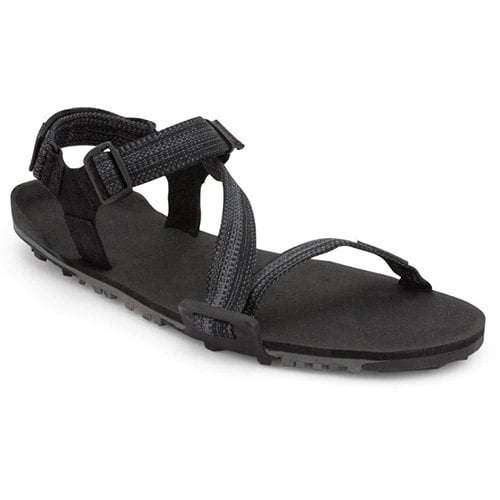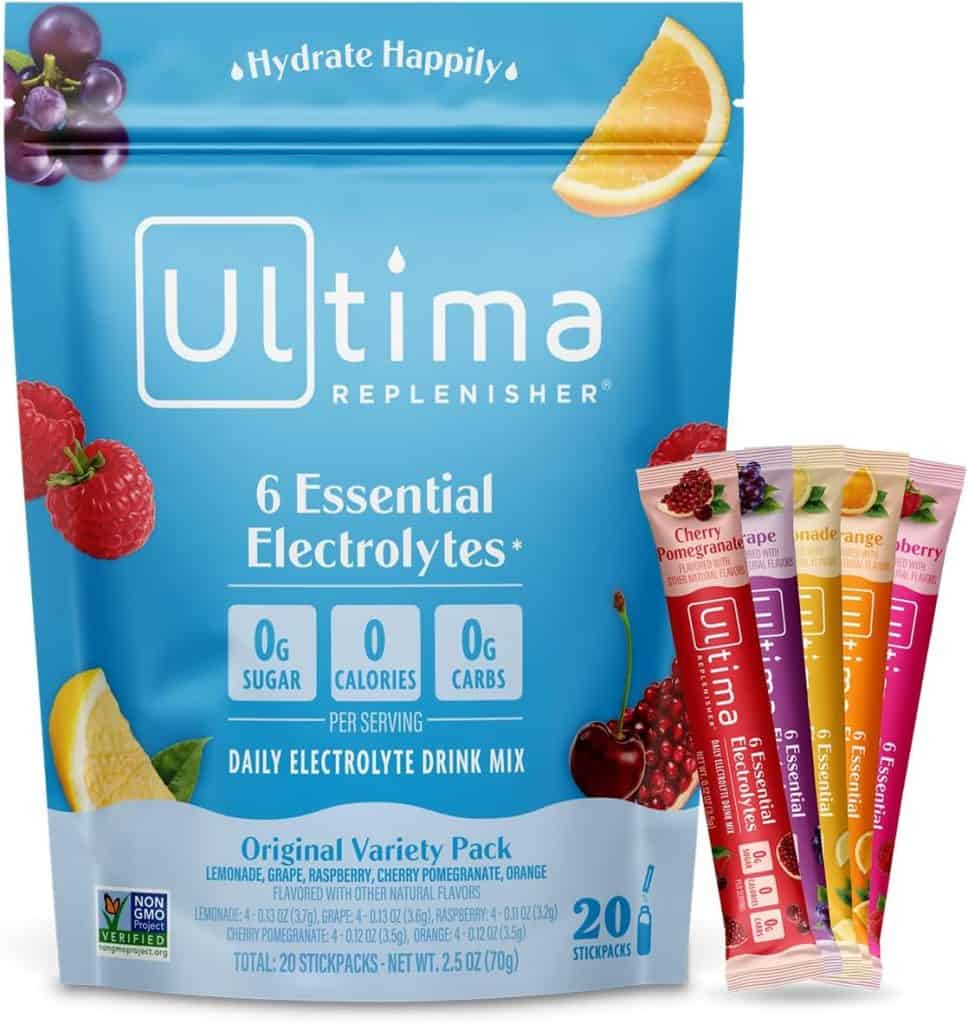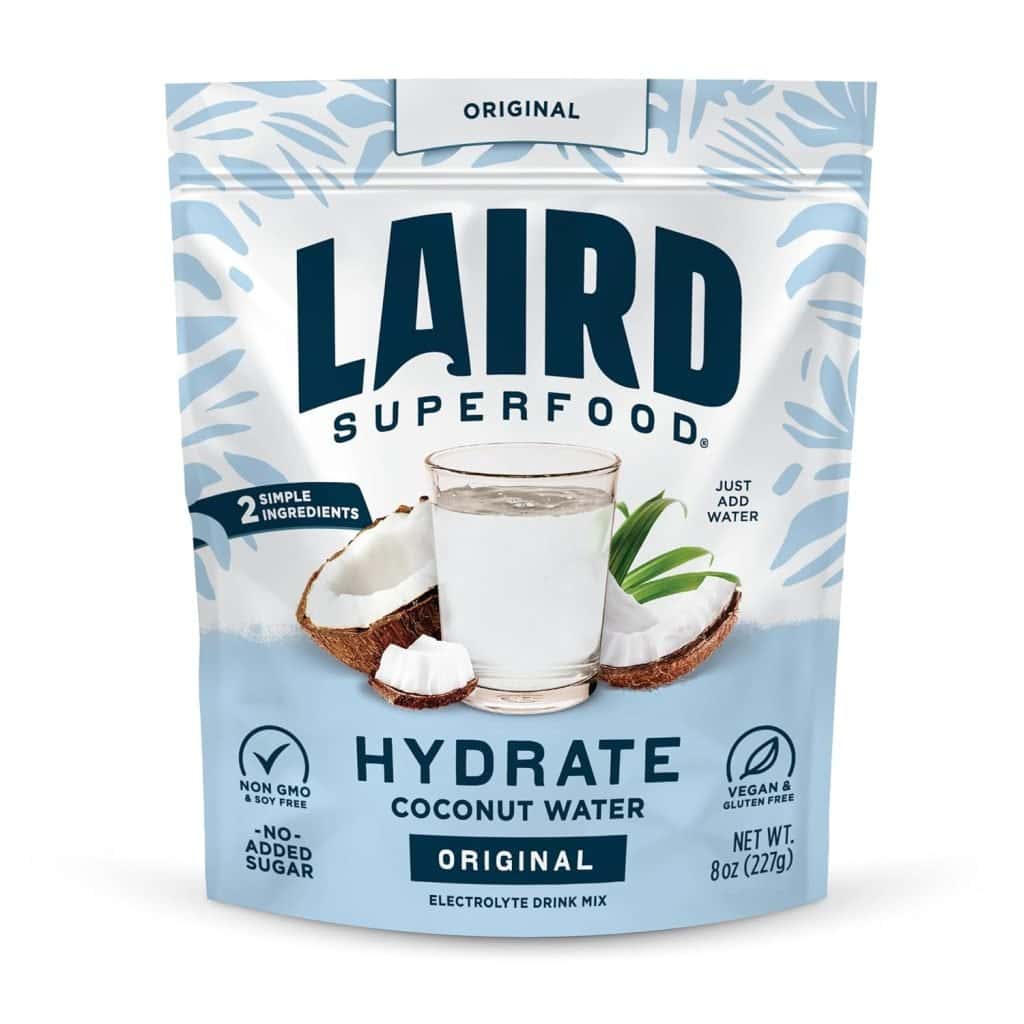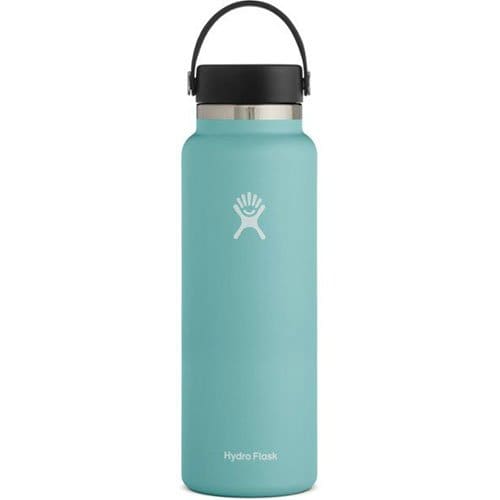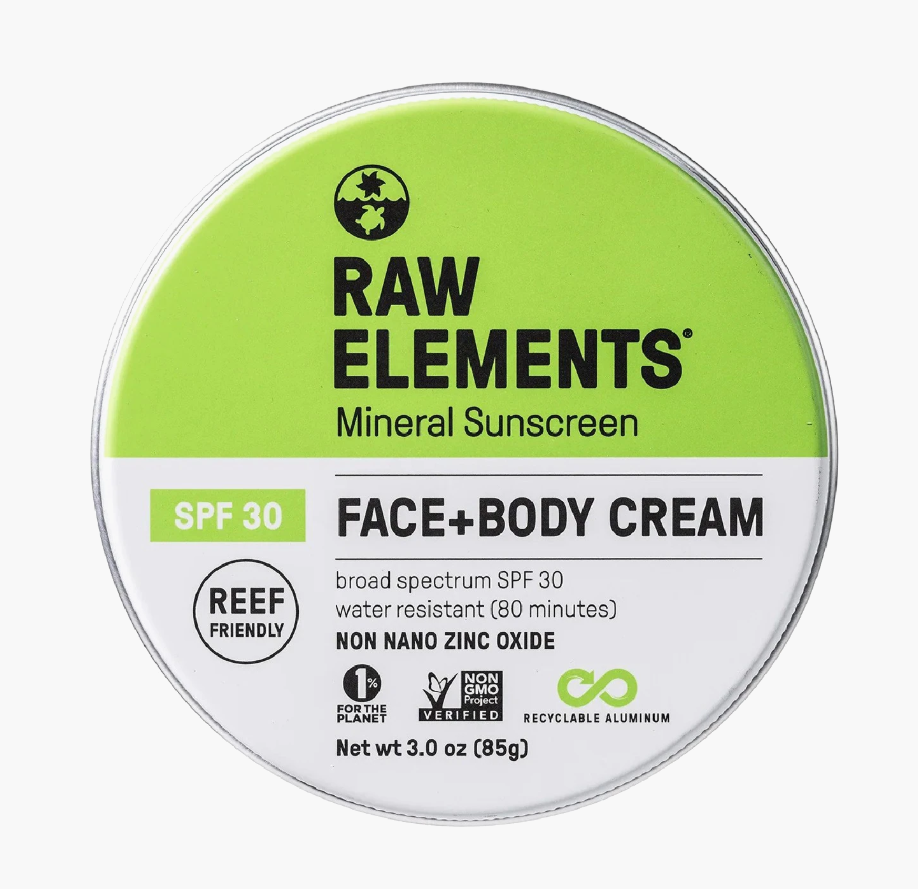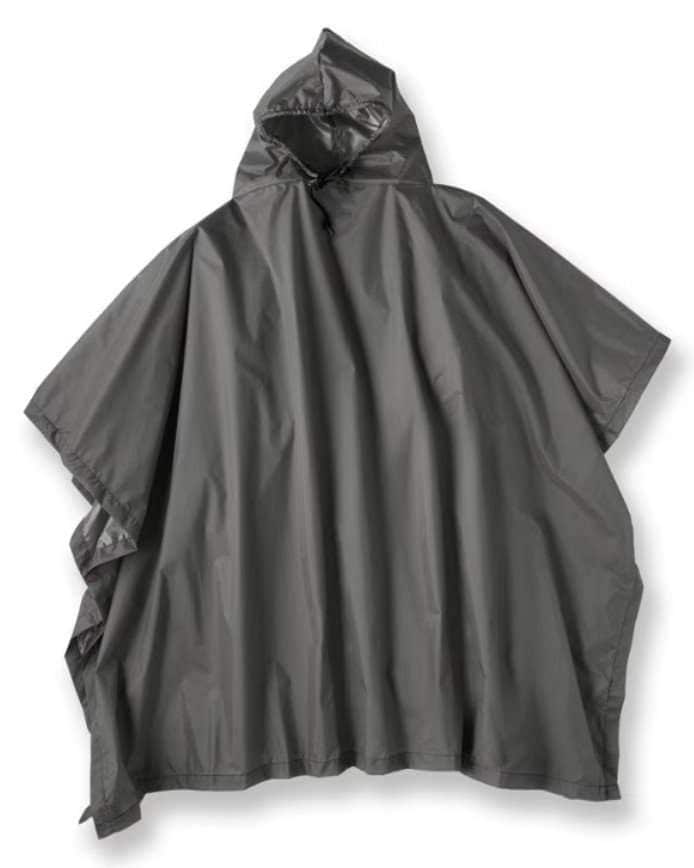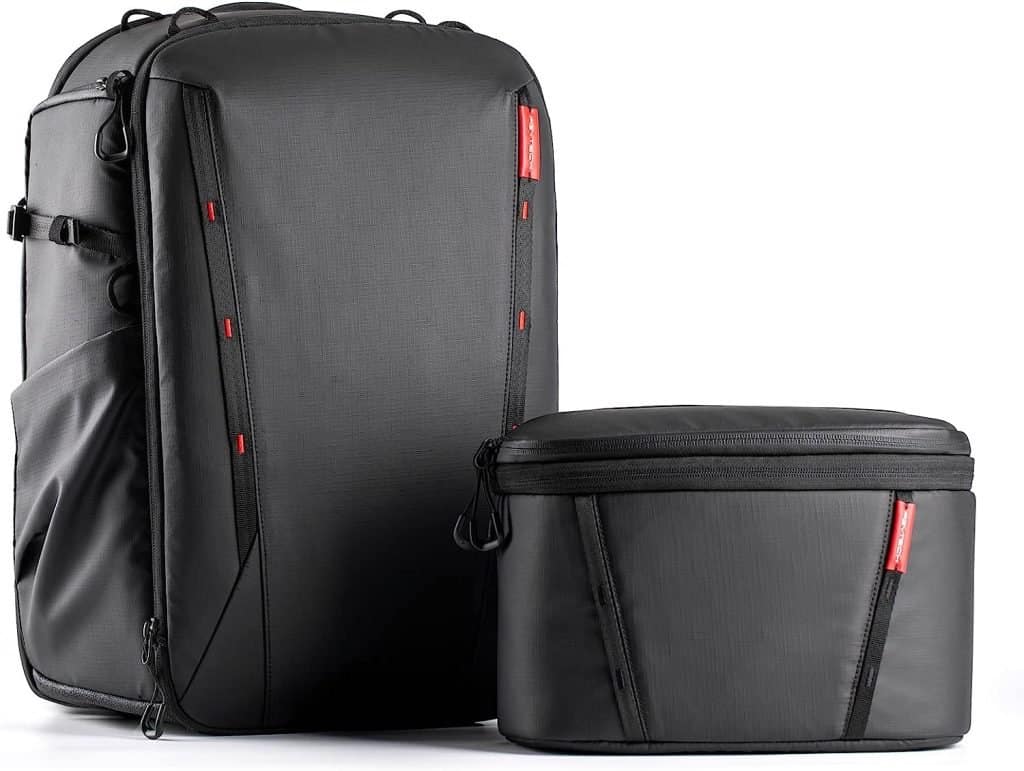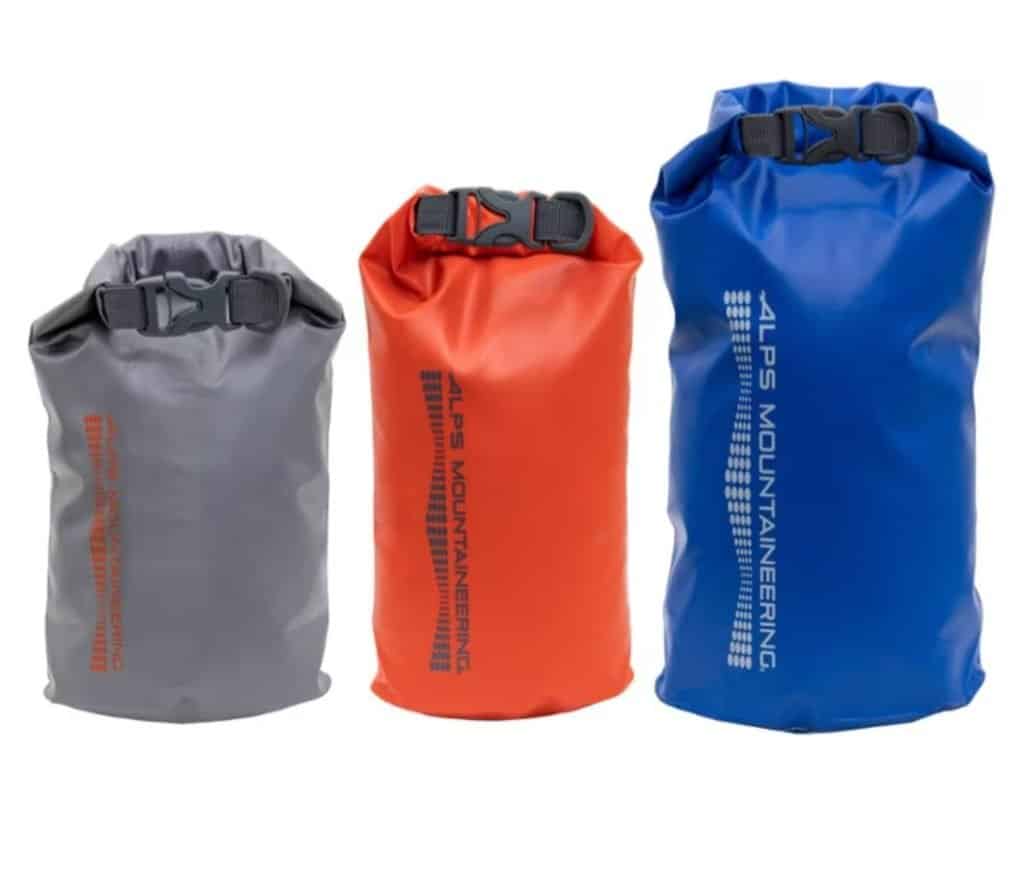Ultimate Guide To Costa Rica Manuel Antonio National Park; What To Do, How To Get There, and Highlights

00000000Costa Rica Manuel Antonio National Park, a magnificent location known for it’s abundant biodiversity and breathtaking beauty! Don’t pass up the opportunity to discover Manuel Antonio’s charms if you’re visiting Costa Rica’s well-known National Parks. Located on the wild Pacific Coast, this small yet colorful jungle is well-known for its astounding variety of plant and animal life.
This preserve welcomes you to explore lush jungles, serene beaches, and an array of flora/fauna. Manuel Antonio National Park offers something unique in store for everyone, whether you’re a thrill-seeker, avid birdwatcher, or just want to unwind in the middle of breathtaking scenery.
I’ll take you on a tour of the park’s diverse species, stunning scenery, and thrilling outdoor activities with this comprehensive guide. I’ll also share info on places to stay, where to eat, and insider tips so you can make the most of your time in this tropical haven. So grab your belongings, put on your hiking boots, and get ready for an amazing adventure in Manuel Antonio National Park!
Some links in this post may be affiliate links or this article may contain sponsored content, which means if you make a purchase, we receive a small compensation at no added cost to you. As an Amazon Associate, I earn from qualifying purchases. Any purchases you make helps to keep this blog going and keeps our content free. I truly appreciate your support! Visit my Privacy Policy & Disclosure Policy for more info!
Costa Rica Travel
Resources Key
All resources on our site are shared to fuel and inspire you to be able to confidently, courageously, and sustainably explore this beautiful world. Here are some resources for before and after your trip!
Manuel Antonio Park Tickets and Opening Times
Here’s some information on getting your tickets straight for your visit to Manuel Antonio National Park. Unfortunately, there are no tickets at the front. All tickets must be purchased online in advance. Visit the webpage of Sistema Nacional de Áreas de Conservación de Costa Rica (SINAC), the agency that oversees park management on the island. After you’ve set up your profile, it’s really simple. Simply choose ‘Parque Nacional Manuel Antonio’ from the ‘Wildlife Areas’ drop-down menu.
PRO TRIP: There’s the option to translate the website from Spanish to English on the top right portion of the screen.
Currently, tickets are offered in 40-minute intervals beginning on the hour. Beginning at 7 a.m. The earliest spots become available every hour until 3 p.m. This is to give some space between everyone walking, to prevent overcrowding, and more National Park preservation.
The entrance fee costs are around $20+ USD (10,153 CRC) for adults and $6+ USD (3,045 CRC) or children between the ages of two and twelve. There is good news for families: children under 12 enter free of charge! Also, locals who live in Costa Rica get a discounted entrance too!
The park is open from 7am to 4pm, every day except Tuesdays. So reserve your tickets and get ready to discover this fantastic national park!
When To Visit Costa Rica Manuel Antonio National Park
It’s difficult to say when the best time to visit Costa Rica Manuel Antonio National Park is because every season, rainy or dry, offers unique benefits and drawbacks. When the best time for you to visit will mostly depend on your own preferences. Let’s talk about each season’s features in more detail, to helo you decide:
- Manuel Antonio has a spike in tourists from December to April, which is considered the dry season. During this time, there is a noticeable drop in precipitation/rain; November receives almost half of October’s rainfall, while December receives half of November’s precipitation. But the park’s hiking routes become increasingly pleasant as the walkways rapidly dry out. Furthermore, the dry season provides the best beach weather, making it the ideal time to enjoy activities like snorkeling trips. Remember when I said, it could get a bit cloudy and hard to see during the rainy season?!
- The rainy season lasts from May to November. So, rain/precipitation levels are more than treble in only four weeks starting in May.However, this contributed towards helping the mangroves’ flora and fauna to flourish from the extra rainfall, raising the possibility of seeing animals. The rainy season offers opportunities for adventure sports like whitewater rafting and surfing trips, even though it may change the appearance of beaches. It’is the start of the best time of year to see whales along Costa Rica’s Pacific Coast. Plus, there are usually cheaper travel expenses during the rainy season.
So which one sounds more like you preferred time to visit?
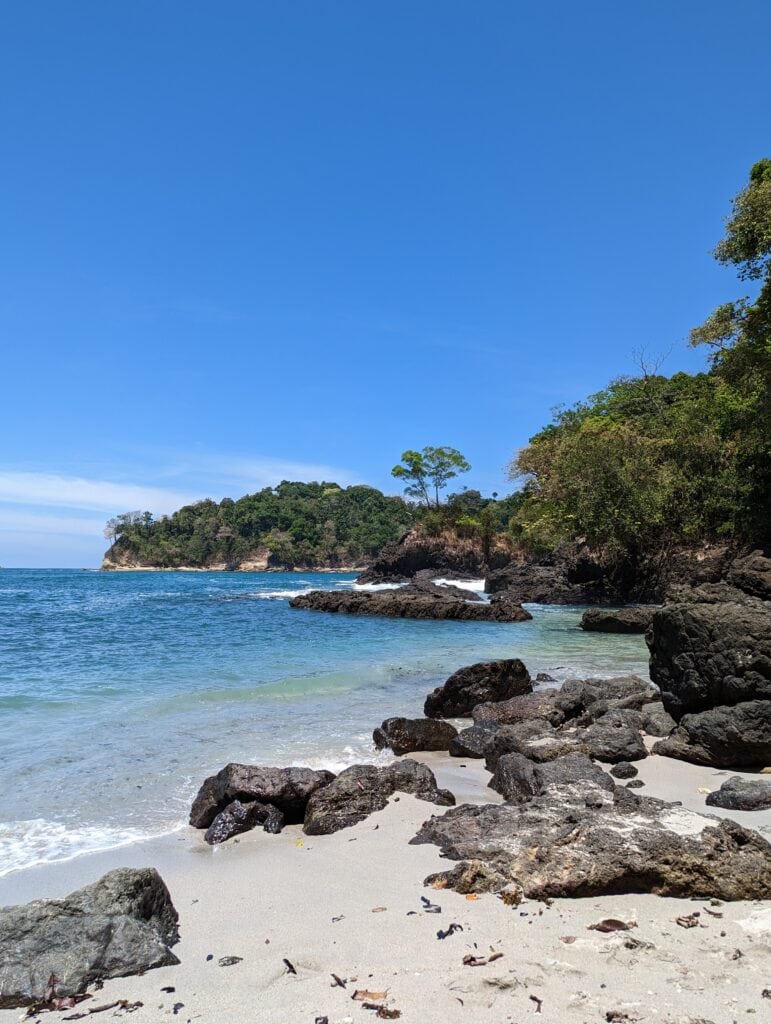
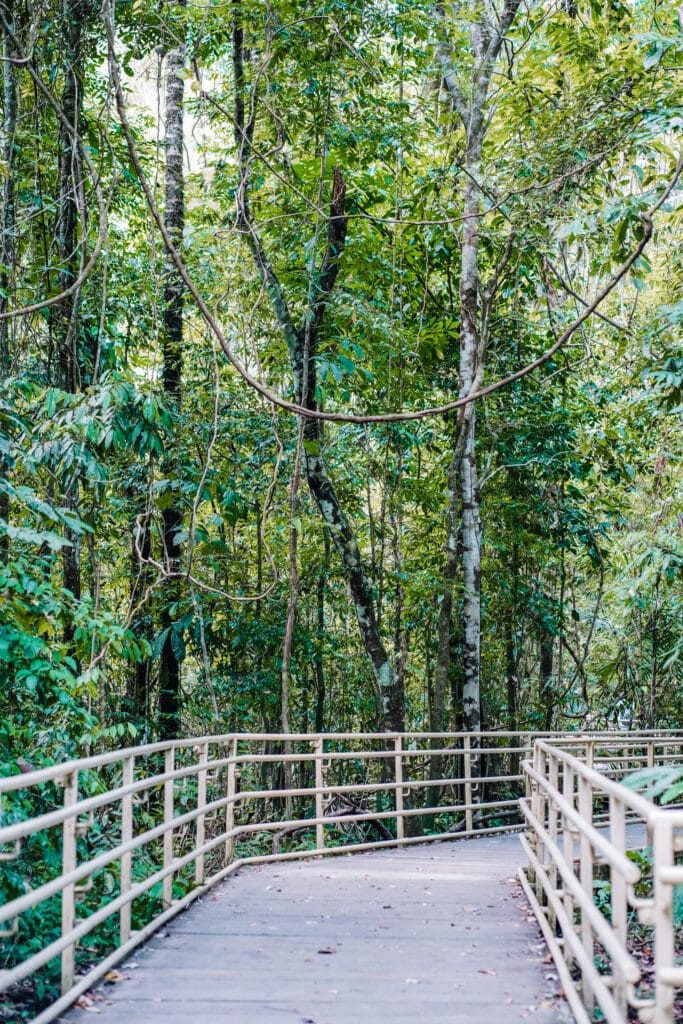
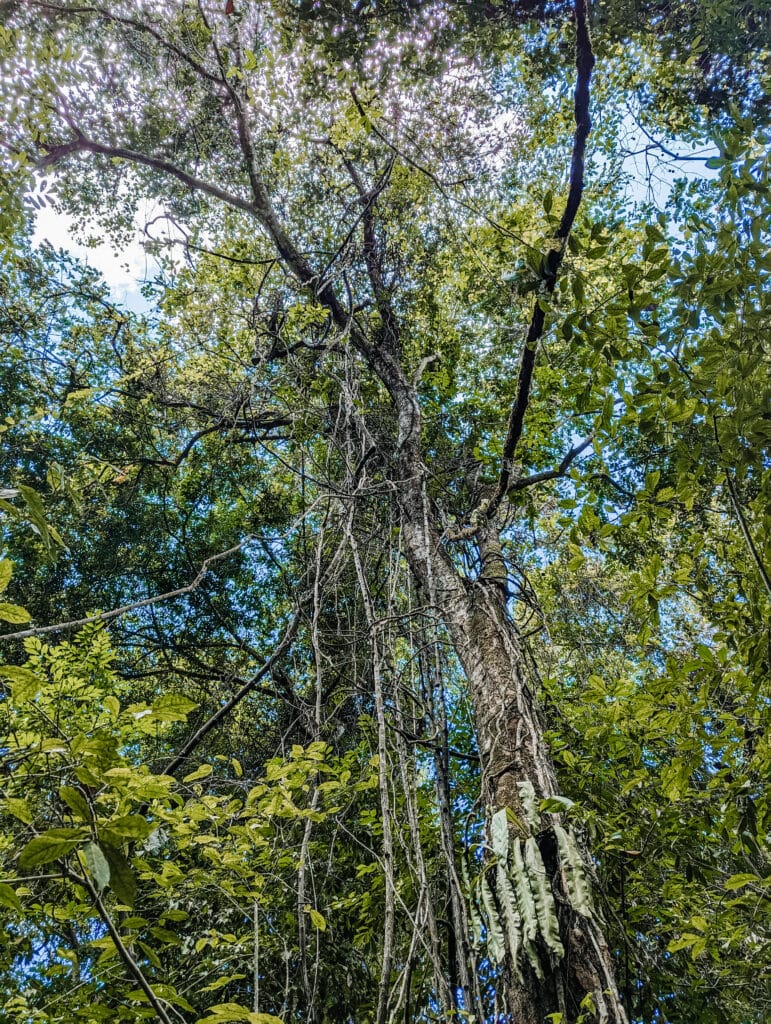
Manuel Antonio National Park Location
Manuel Antonio is located on Costa Rica’s breathtaking Central Pacific coast. This region, lovingly referred to as Manuel Antonio, stretches on an isthmus headland south of Quepos town. The well-known Manuel Antonio National Park and it’s two main beaches are the area’s top attractions.
The closest town to the national reserve is Quepos, which has developed into the unofficial center for tourists visiting this well-known location in Central America. Manuel Antonio is located in the Puntarenas province of Costa Rica, which is a small region that stretches from the Panamanian border to the untamed Nicoya Peninsula.
AIRPORT & MAIN CITIES
When thinking about which airport is best to fly into when trying to go to Manuel Antonio National Park, that completely depends on what else is on your visit list in Costa Rica. San José, Costa Rica, is the main big city of the area. Which offers much to do, beyond the park. But it’s about a 3 hour drive or 105-112 miles (170-180 kilometers), depending on the route you choose.
However, if you’re looking to be closer, and not looking for the hustle and bustle of the city, then flying into the smaller Quepos Airport (XQP) might be a better option for you. This airport is only about 4 to 5 miles (6 to 8 kilometers) or about a 15-20 drive, to/from Manuel Antonio
How To Get There & Get Around
The span of the town that Manuel Antoni is centrally located and around 3.5 miles (5 or 6 kilometers) Walking isn’t the most practical way to get around town because of the mountainous terrain. Especially when pedestrians have to share the road with fast-moving cars/buses. So, getting around the main town is bes through vehicular transportation. But walking is the only way to get around within Costa Rica Manuel Antonio National Park itself.
Rental Cars
As of right now, renting a car is the most popular mode of transportation. Without having to follow bus schedules, this method makes it easy to go practically straight to the park’s entrance. Choosing a rental car in Costa Rica is definitely the most convenient option. When deciding whether to drive or use public transit in Costa Rica, it’s a good idea to plan your itinerary and take the whole cost into account.
If you have access to a car, you should look into parking options at most locations. As this can also increase the budget! There is a small and locally run parking space next to the entrance, although it becomes crowded quickly, especially during early morning, and costs $5-8 USD (3,000 – 4,200 colones (CRC)) per day.
Guided Private Tour
If you prefer to travel alone or decide that it would be more cost-effective to take a tour, you’ll be happy to hear that it’s simple to plan and book. Explore the tours here!
Plus, you don’t have to bother making your own travel arrangements, drive, or figure out parking. Not to mention, if you want to have the best wildlife experience possible, think about going on a guided trip with knowledgeable and experienced guides. They will also show you where to look for animals, assist you in identifying critters, and provide you with interesting information or fun facts.
Bus
The easiest method to get to Costa Rica Manuel Antonio National Park is by bus, especially for those on a tight budget.
Thankfully, there’s a handy and reasonably priced 25-minute local bus service that runs between 6 AM and 9:30 PM, transporting people around Manuel Antonio. Waving down these buses is all it takes to hail one from anywhere along the roadside.
The closest town to the park, Quepos, has excellent access to Uvita, Jaco, and San Jose, so you’ll need to travel there first. When trying to get to the National Park itself; any hillside lodging when you arrive in Quepos has options for a public bus, which travels along the 618 road every 20 to 30 minutes.To get to the park from Quepos, just board a normal bus that leaves the bus terminal approximately every 30 minutes.
There are direct routes to Quepos and direct services from San José to Manuel Antonio at different times of the day. So, if you’re trying to take the bus from San José, you may also find yourself on a service that heads towards and leaves you off along the Costanera Sur route. From there, you will have to take a cab to the town’s bus station, from there you may take a local bus to Manuel Antonio or your next destination.
Walking
Sometimes walking can actually be an easy option, but only if you’re staying at the hotels located right next to the park entrance. But be careful if you intend to go a long distance—the major road in this neighborhood is fairly twisting and narrow, with limited room for pedestrians.
The hotels located right next to Costa Rica Manuel Antonio National Park that are available for booking are:
Taxi
Alternatively, you can take a cab, if you would rather not participate in a tour and would rather not deal with parking or buses. Depending on your area, prices usually range from $10 to $20 USD or more from one side of the city to the other. But be mindful that this can often be the most expensive option and cabs are not as easily available outside of the major cities.
What To Pack & Leave At Home
Knowing what to pack can be the difference between a good trip and the disappointment of an experience. Here’s some great options of things to bring with you:
#1. Bug Spray
Be especially ready to bring your bug balm and/or bug spray; you’ll want to keep those annoying pests away, whether you’re relaxing on the beach or hiking in the forest. To be environmentally conscious and considerate of the environment, I’ve only shared these natural options with you. Within a jungle, there’s lots of opportunities for sitting water or puddles to become buggy spots. Being prepared can definitely give you a better experience.
#2. Beach Necessities
To really enjoy paradise on the beach; grab a towel, sandals, swimsuit, and bring along any additional beach gear you may like. After all, Manuel Antonio’s beaches are most definitely worth having as a major part of your time here, especially since each shows a bit of a different beauty and animal sighting.
→ Want a more in-depth beach packing list? I’ve got you covered – head over to the ultimate beach packing list article here! ←
#3. Lookout Gear – Binoculars & Camera
When it comes to lookout gear, this could be either a camera, a set of binoculars, or anything else to improve your wildlife sightings.
Just be sure that if you’re bringing your camera, you’re using the proper lenses, have an extra fully charged battery, and store the camera in a waterproof bag too. All these are incredibly important.
There are multiple binoculars of different varieties, all of which vary in quality, just like anything else. But I’d suggest bringing a small and compact version to accommodate traveling and lowering the risk of breaking them or having it weigh down your suitcase. Not to mention, they pair nicely with any tours if you decide to get them.
#4. Reusable Waterbottle & Electrolytes
I know that is one that’s just a classic or that most people know already, but the more reminders the better—just saying! Plus, around the park, they do have water fill-up stations, in an effort to avoid plastic water bottles. The park doesn’t even let single-use plastic bottles past the entrance, so this isn’t exactly a negotiable option. It’s for your safety and staying hydrated. I don’t usually get all serious in the articles, but this is a serious yet overlooked element in your visit.
These are some of my favorite water bottles and electrolytes that you can’t go wrong with:
Here’s where you can find the refill stations throughout Costa Rica Manuel Antonio National Park:
- At the Main Entrance – Before you enter the park, there is a refill station near the ticket checkpoint.
- Near the Restrooms
- By Playa Manuel Antonio – A refill station can be found near the beach access points.
- Ranger Stations – Some ranger stations inside the park have water refill stations too.
Another important aspect to consider with the heat, humidity, and water we’re drinking is to also be mindful of staying hydrated, Sometimes just water isn’t cutting it. So, a great option is to add in some electrolytes to boost your body’s ability to absorb more water and keep you better hydrated. It can also mix up the flavors and make it a bit more enjoyable if you get bored of just water.
These are a few of my favorite options; they’re processed sugar-free, and not overly sweet, but pack a good flavor, up above!
#5. Filter & Sterilizer
As far as Costa Rica goes, I’ve heard very mixed things about whether or not the water is sanitary. I’ve just not really taken the chance to fully chug the Costa Rican water myself. Regardless of what country I go to, I always bring my pump and a way to sterilize the water.
Below, I use these filtering and sterilizing options to prevent me from getting sick, as well as to reduce the amount of single-use plastics.
#6. Food & Snacks + To-go-ware
As the National Park upholds the strong values and goals of keeping the country clean, this means we’re also a part of those efforts too!
🌱 Eco Tip: Only water in reusable bottles, whole fruits, and meals (sandwiches are great!) in reusable containers are allowed in the park. The part that makes it a little complicated is that there are no food vendors, restaurants, or picnic areas inside the park. But you can eat before and after you leave the park entrance. Just remember that there’s no re-entry!
Here are my favorite reusable containers, perfect for entering the park. Since glass isn’t allowed either, these stainless and silicone options are great:
#7. Sunscreen & Sun Protection
Most people also mention sun protection for just about anywhere that you’re going to go that has sun. But let me just share that the sun hits differently here, it’s quite a bit more intense actually. The beaches can be rather exposed, even if the pathways may provide some shelter or shade, it’s not much.
Be sure to apply sunscreen, wear a hat, and cover your shoulders with a UV shirt, to be on the safer side! Different countries have an array of elevations and sun exposure, and their location to the equator varies. Make no mistake, the sun can be enjoyable, but it can also be too quick.
These sun protection methods are all environmentally safe and non-toxic below…
#8. Rain Coverage & Backpack
Considering that most of Costa Rica is a tropical jungle, there can be unexpected rainfalls. This means being prepared and keeping valuables dry is a good focus. Some examples of rain coverage include hats, ponchos, waterproof bags (like the one I mentioned above), raincoats, umbrellas, etc.
Here are a few of my go-to’s:
#9. Passport & ID
When traveling to other countries, having your passport with you is actually incredibly important, simply for the fact of being able to confirm tickets, pull out money at the banks, or exchange money to the local currency. But be sure to keep in your dry bag, maybe put it in a plastic baggy, or within a passport holder to ensure it stays protected from the elements too.
LEAVE AT HOME
There are certain items that the National Park looks for, they’ll ask to check each person’s bags before entering the park, to ensure the safety and environmental protection. If you have these items, they’ll ask you to leave them outside of the park. So, you can either give it to a local, put it back in your car, or don’t bring it with you at all.
- Don’t bring single-use plastics into the park – this prevents excess garbage, litter, and wildlife from hurting themselves with the trash left or it could clog the water ways.
- Drones and videography are are also not allowed in the park
- Speakers and loud music are also another thing to skip for this trip. It can disturb the animal’s rest cycles, some sleep at night while others need to sleep during the day. The disturbing sounds can push them deeper into their nest not wanting to come out to be seen.
- Pets are great some places, but this isn’t one of them. Many animals can be territorial and it’s better to keep things smooth and calm for all the animals here.
No hunting, fishing, or collecting wildlife – the National Parks are all about preservation. So, do not take shells, sand, plants, rocks, or any part of nature from the park in any form.
Absolutely no alcohol, cigarettes, or recreational drugs are allowed in the park whatsoever. Again, to prevent litter, keep the animals safe, and reduce any accidents.
Best Things To Do In Manuel Antonio National Park
Since Costa Rica Manuel Antonio National Park specializes in amusing and enchanting its guests, I’ve made a short list of some of the best things you should do here. Read on and enjoy!
Discover The Beautiful Wildlife
Manuel Antonio National Park is a great option if you love the outdoors and animals; in Costa Rica, nature is around every corner. Over 350+ bird species and 100+ animal/mammal species can be found in the park. Which has the most beautiful beaches and deep rainforests; being an absolute wildlife haven. As well as one of the most varied ecosystems in Central America, Manuel Antonio area, which is well known for its extraordinary biodiversity.
This area is a special heaven for bird fans; from pelicans, parakeets, toucans, scarlet macaws, brown boobies, and cute hummingbirds. But there’s not just birds taking the stage here! There are many interesting species of mammals, amphibians, and reptiles to see whether you’re walking on the beach or doing some deep and dedicated explorations. Some varieties include the famous howler monkeys, hoffmann’s three-toed sloths, spider monkeys, white-faced monkeys, squirrel monkeys, coatis, iguanas, and boa constrictors.
There is something for everyone here, whether you want to go on a rainforest trip, are itching to see dolphins and whales, or are just passionate about birding. Keep your eyes peeled even if you’re simply exploring on your own—you never know what amazing creatures you could come upon! Prepare yourself for an incredible wildlife trip at Manuel Antonio National Park by packing your camera and keeping your eyes open, but staying protected by sunglasses and lens cleaners of course! ha!
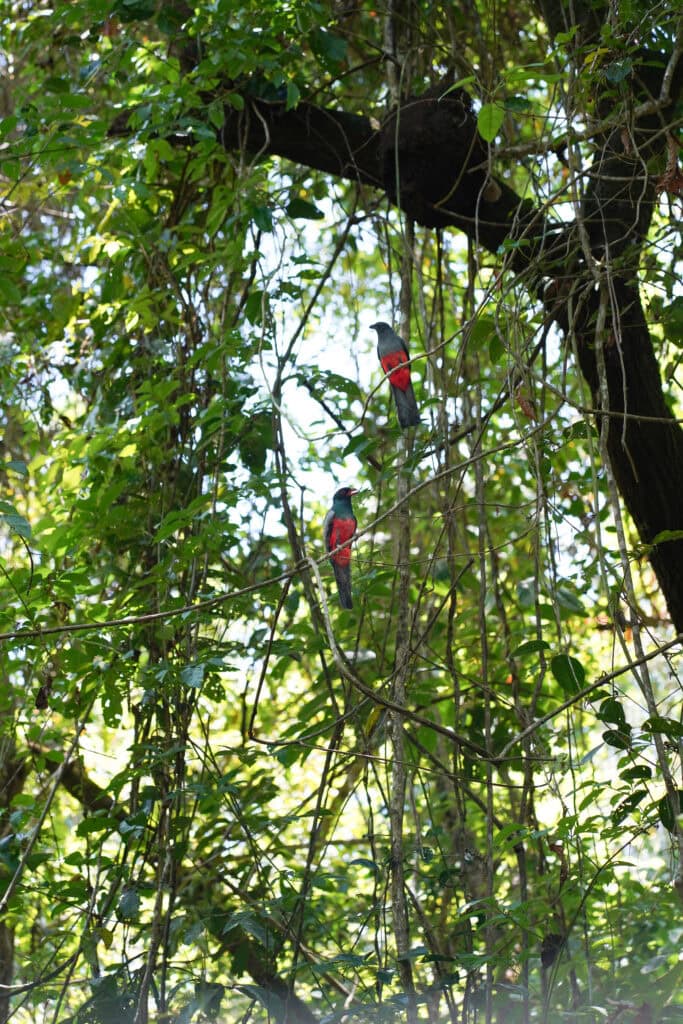

Go On A Hike / Follow The Beautiful Trails
It’s no secret that hiking routes and trails are all around Costa Rica Manuel Antonio National Park, you may just end up spending a whole day exploring them. It’s hard to get lost in the park because practically every intersection has a map of the hiking routes, so don’t be afraid to find the fun in “getting lost”.
There are numerous interconnected walking trails (senderos) in Costa Rica that offer the chance to spot and breathtaking viewpoints. These trails are well-maintained, either paved, covered, or constructed with wooden walkways, making them accessible even during the rainy season. As you come and go from the beaches, you’ll naturally stumble upon several of these trails.
For everyone looking for an energizing and reunited encounter with the natural world, Manuel Antonio National Park provides an incredible outdoor trip, regardless of your fitness level.
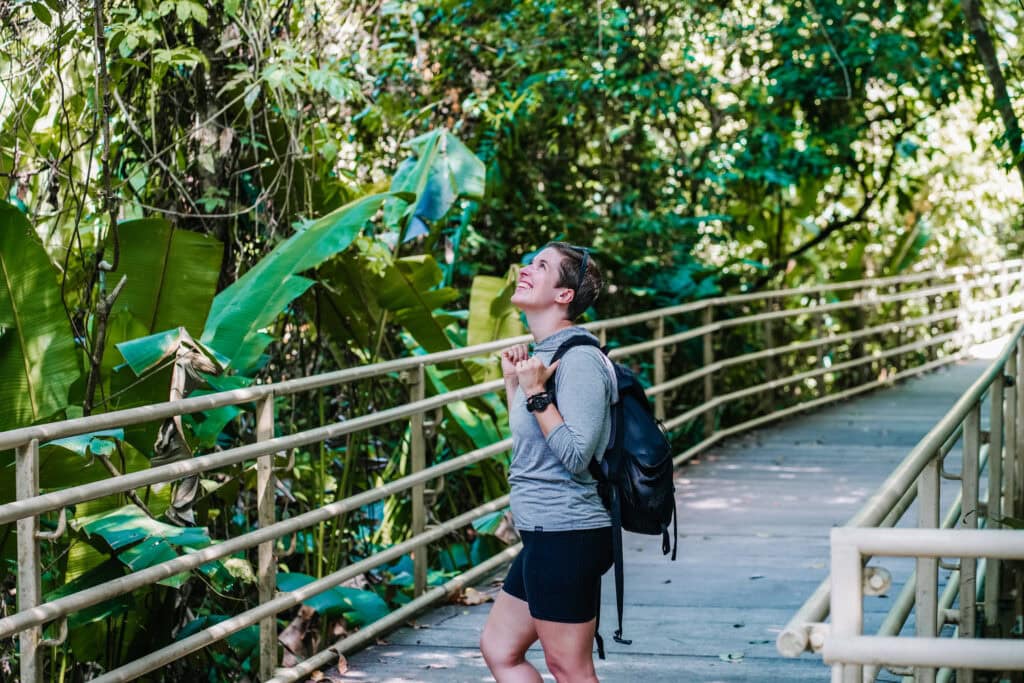
Here’s a rundown of some popular trails:
1. La Catarata / Sendero Catarata
This trail leads to the stunning Catarata Del Toro Waterfall in Bajos Del Toro, spanning between 270 to 295 feet (82 to 90 meters) into an ancient volcanic crater.
Trail Specs:
Length: 1.7 miles / 2.7 kilometers
Trail Type: Out and back trail
Terrain: Some concrete, wood, and dirt.
Elevation: 465 ft / 150 meters
Fitness Level: Moderate – There’s a difficult climb that can be a challenge for some.
2. Mirador Trail / Sendero Mirador
A challenging trail that ascends to two viewpoints, rewarding you with spectacular vistas. The first viewpoint is especially picturesque, but it’s worth continuing to the secondone for an even more breathtaking panorama. Take Sendero Mirador to the viewpoint point above the woodlands for a longer trek.
Trail Specs:
Length: 0.3 miles / 500 meters one way.
Elevation Gain: 50-100 feet / 15-30 meters – mostly flat
Trail Type: Out-and-back trail
Terrain: Primarily flat with small inclines on well-maintained gravel path.
undulations, featuring gravel surfaces and several lookout points.
Fitness Level: Rated as easy
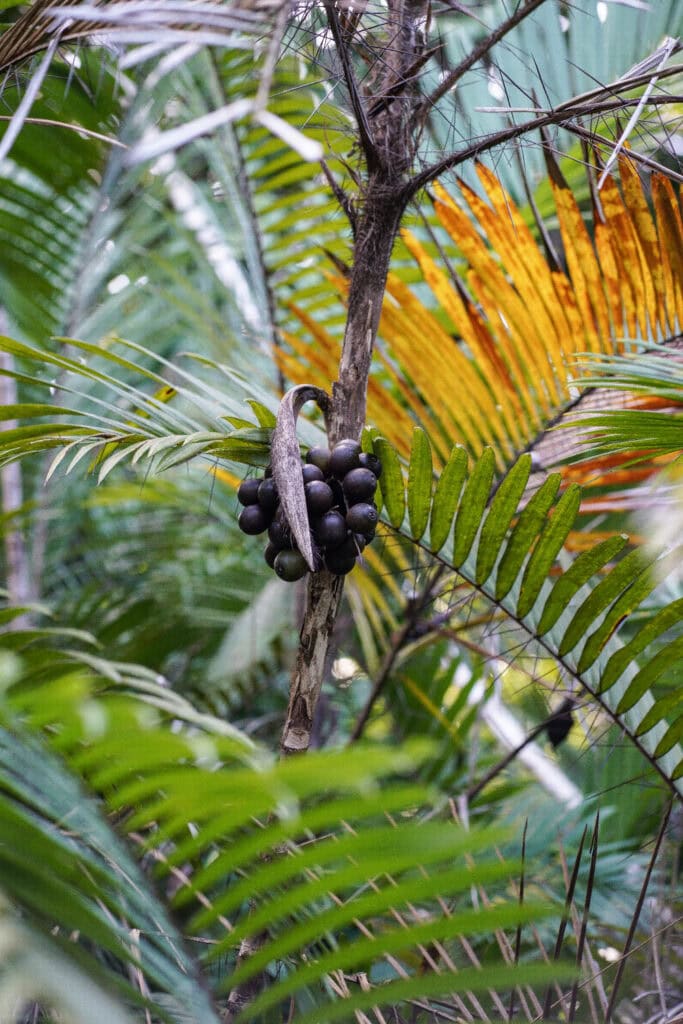
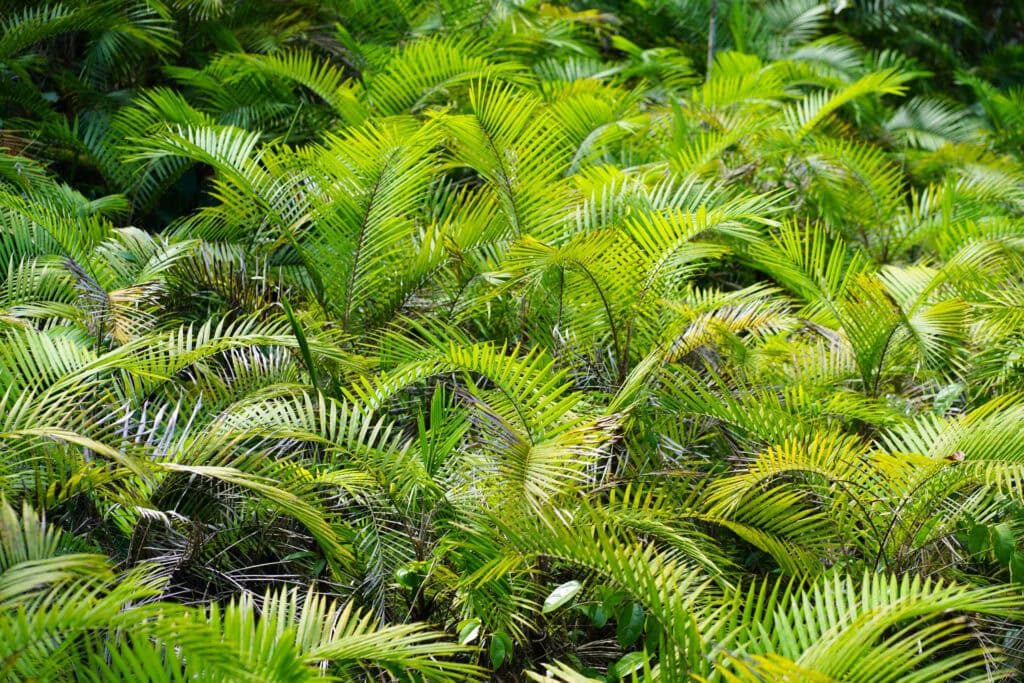
3. Cathedral Point Trail / Sendero Punta La Cathedral
This circular loop begins from the natural corridor linking Playas Manuel Antonio & Espadilla Sur. While the signage may be confusing at first, the trail offers a scenic walk along the Pacific Coast. Although some viewpoints may be inaccessible due to maintenance/wash outs, having a plan B trail is important when trying to visit this one. But visiting the coastal Sendero Punta Catedral to have the possibility of seeing the whales and dolphins is worth at least trying to plan for.
Trail Specs:
Length: 1.4 miles / 2.3 kilometers
Elevation Gain: 178 feet / 54 meters
Trail Type: Loop
Terrain: A mix of gravel paths, steps, and boardwalk platforms at viewpoints.
Fitness Level: Easy route, taking around 41 minutes to complete. The trail is well-maintained and suitable for most. But there are light climbs to consider too.
4. Hidden Point Trail / Sendero Puerto Escondido
It’s a great first hike, since the access point is right near the entrance. This view gives an overlooking beach view, showing the calm waters and bright blue beauties against the lush green rainforest. It’s simple, easy, and beautiful.
Trail Specs:
Length: 0.25 miles / 400 meters one way.
Elevation Gain: 95 feet / 29 meters
Trail Type: Out-and-back trail.
Terrain: The trail is paved and well-maintained
Fitness Level: Rated as easy
5. Howler Monkey Trail / Sendero Los Congos
So, just like the trail name “Howler Monkey Trail”, there’s an enormous community of Howler Monkeys here. So, if spotting one is on your Costa Rica Bucketlist, then this is the perfect place for you! Be sure to go early morning or early afternoon, that’s when they’re out the most.
It’s just a short trail connecting the Mirador trail with Playas Gemelas and the Puerto Escondido trail. Easy – Peasy!
Trail Specs:
Length: 0.17 miles / 280 meters one way
Elevation Gain: 72 feet / 22 meters
Trail Type: Connector trail
Terrain: A mix of gravel paths and steps, with gentle inclines and declines through dense rainforest.
Fitness Level: Rated as easy
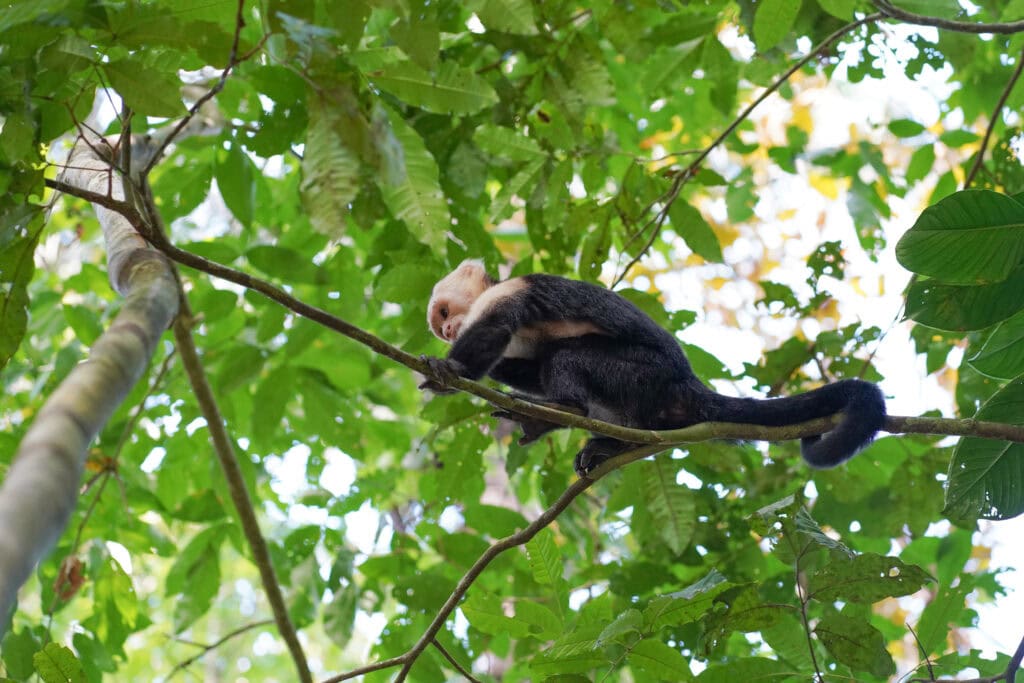
6. The Service Road / Entrada Principal
While not the most scenic, this wide gravel pathway is ideal for wildlife spotting, according to guides, and is often used by tours. So, there’s definitely wildlife, flora, and fauna to be seen here. Have your camera and binoculars ready!
Trail Specs:
Length: 0.7 miles / 1.1 kilometers one way.
Elevation Gain: Minimal
Trail Type: Out-and-back
Terrain: Unpaved and is made up of a wide, flat gravel surface. It is well-maintained, with some sections having concrete paths and platforms.
Fitness Level: Rated as easy
7. Mangrove Trail / Sendero El Manglar
Did you that mongraoves house absolutely beautiful wildlife? Throughout this trail there’s signs filled with the information on what you might spot and where, allowing you to go at your own pace and there’s no guide needed here! The wooden walkways on this trail have been set up to preserve the mangroves and also protect the wildlife within them. It also offers a shortcut to Playa Espadilla’s far end, but you can also choose to continue on to The Sloth Trail too.
Trail Specs:
Length: 0.6 miles / 1 kilometer one way
Elevation Gain: 26 feet / 8 meters
Trail Type: Out-and-back
Terrain: The trail is on wooden platforms,protecting the mangrove ecosystem below.
Fitness Level: Rated as easy
8. The Sloth Trail / Sendero Perezoso
Listed as one of the top short treks in Central America by Lonely Planet, this trail branches off from the main path and into groves of old trees that offer some of the world’s greatest sloth watching. The Mangrove and Sloth Trail is a more scenic and slow paced trail. After all, sloths move incredibly slow, and are more active around dawn and dusk. . A great way that I keep track of dusk and dawn is through my Garmin Watch, which shows both and naturally syncs digitally to the new place I’m in. It makes keeping track of it, seamless!
Trail Specs:
Length: 0.75 miles / 1.2 kilometers one way
Elevation Gain: 49 feet / 15 meters
Trail Type: Out-and-back
Terrain: Paved and well-maintained, but with wooden platforms and concrete paths. As well as having gentle inclines and declines.
Fitness Level: Rated as easy
Whether you explore independently or with a guide, these trails offer diverse experiences, from wildlife encounters to stunning natural landscapes.
Explore, Swim, And Lounge At The Pristine Manuel Antonio Beaches
Manuel Antonio’s stunning beaches make it feel like a perfect getaway. Imagine yourself enjoying soothing dives in the glistening crystal-clear waters, lounging on the silky beach, and/or soaking up the sun. It all comes down to appreciating the wonders of nature and savoring each second of your beach vacation!
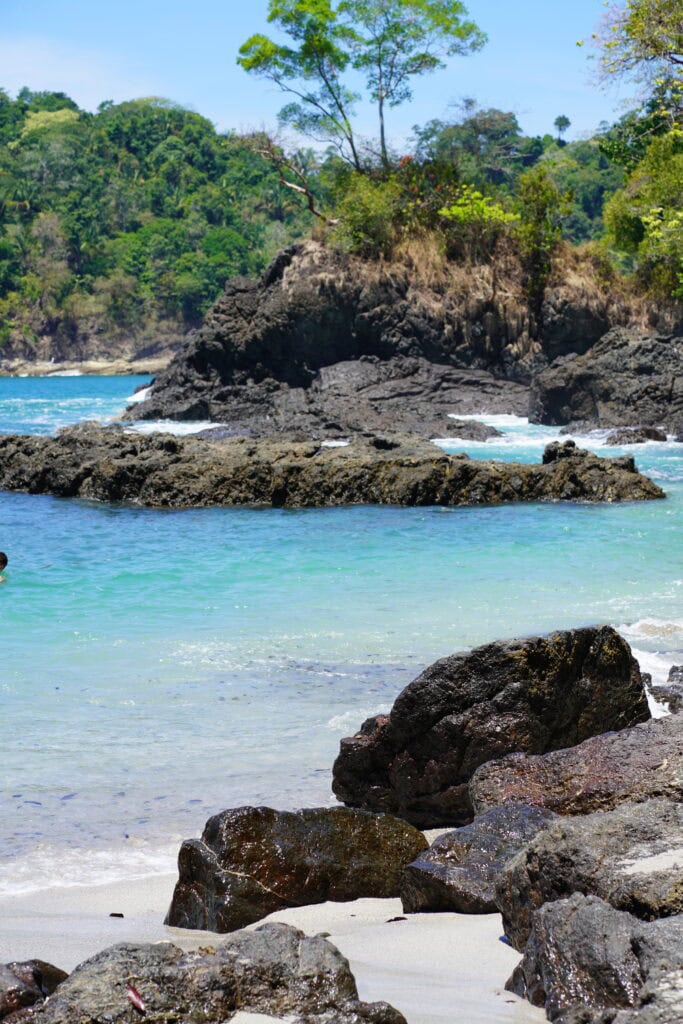
Playa Manuel Antonio
Playa Manuel Antonio Beach shines with it’s smooth and white sands and glistening waves, it’s just stunning. Because it’s protected from large waves, it has a lower wave feel, making it ideal for families. But just be mindful of the large currents once reaching the larger waves. They’re still there, but just a bit further out. The breathtaking vistas and opportunity to see the local wildlife make it well worth it.
After entering the park, follow the Main Trail (Sendero Principal) for about 0.8 miles (1.3 km) Playa Manuel Antonio is the second main beach inside the park, after Playa Espadilla Sur. The entrance to the beach is clearly marked and leads to pristine white sand and turquoise waters. The trail is flat, well-maintained, and easy to walk, making it great for all fitness levels.
PS: It’s also handy for showers and restrooms. However, it gets crowded in the afternoon when families and parties use the space.
Playa Playitas
Playitas Beach is one of Manuel Antonio’s smallest and most undeveloped beaches, getting it’s name from it’s small size. Playa Playitas is a small, scenic beach located on the northern end of Playa Espadilla Norte, just outside Manuel Antonio National Park. The easiest way to reach Playa Playitas is by walking north along Playa Espadilla Norte (the main public beach). Be sure to walk toward the rocky outcroppings at the end of the beach.
Although a peaceful beach, it’s split in half by a jagged rocky point. When choosing the best time to visit this beach, be sure to explore during low tide because areas of the beach are unavailable during high tide. Depending on the tide, you may be able to walk around the rocks at low tide or need to go through a small jungle path during high tide.
It’s also important to note that the currents can make it dangerous to swim, but instead a surfer’s dream.
Playa Espadilla Sur
Espadilla Sur Beach is a short walk from Playa Manuel Antonio and has an untamed, rustic beauty. It’s the ideal place for a leisurely stroll because of its cinnamon-colored beaches and beautiful jungle backdrop, which are also frequently visited by playful howler monkeys. For some peace & quiet in the afternoon, head to Espadilla Sur if the main beach becomes too busy.
This beach, well-known for its powder-soft white beaches and lush jungle surroundings, provides a peaceful haven from Playa Espadilla Norte‘s busy areas. Playa Espadilla Sur‘s special location enables you to completely immerse yourself in the natural beauties of the ocean and forest, which are harmoniously blended.
Biesanz Beach
For a breathtaking sunset view, make your way to Biesanz Beach. Tucked away in a secluded cove, this hidden gem glows with tranquil turquoise waters. Follow the brief but occasionally slippery jungle path that begins to reach Biesanz Beach. To beat the crowds and bask in the sunshine, it’s best to arrive early, as the small sandy beach tends to fill up quickly, and the surrounding rocky formations provide shade later in the day.
With the exception of weekends, Biesanz Beach offers a serene escape from the hustle and bustle. Don’t forget to pack a picnic or some cash, as local vendors offer umbrella rentals and refreshments for a fee.
Playa Gemelas
Playa las Gemelas offers a serene escape from the bustling crowds often found on the city’s more popular beaches. Despite its small size, the deep blue waters and sandy shores offer a peaceful retreat. However, due to its limited space, the beach can become crowded, especially on weekends. To enjoy a more secluded experience, it’s best to visit during the week and arrive early to get a prime spot on the white sand.
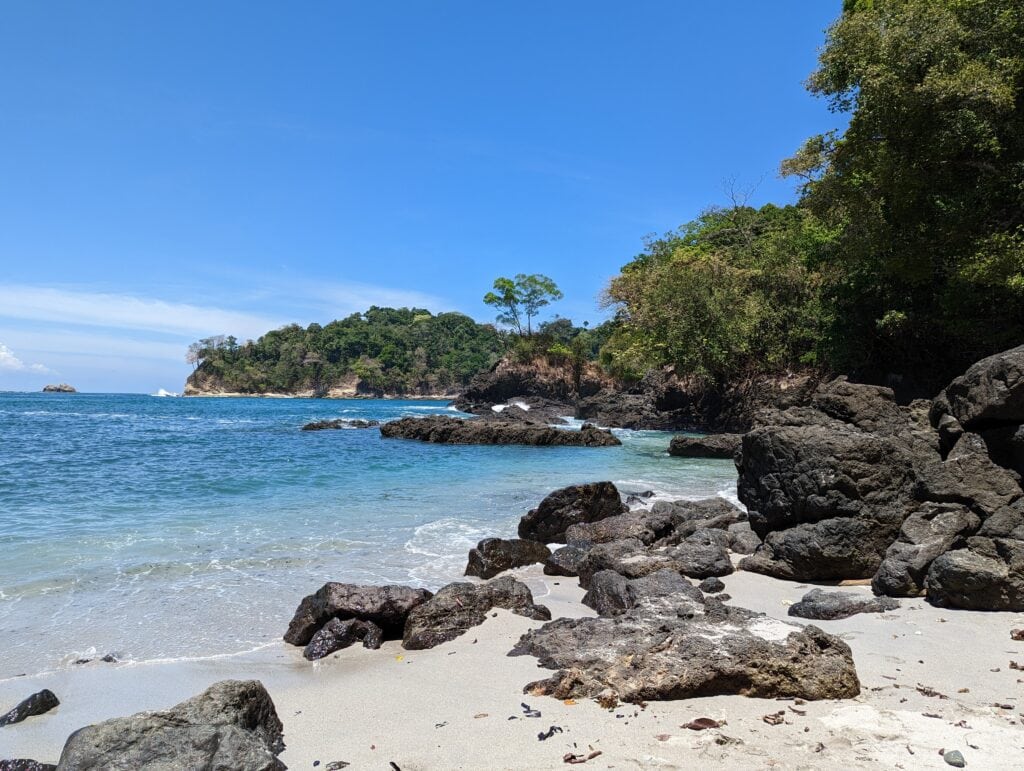
Playa Espadilla
This beach is unique in Quepos since it’s the only one that is not inside the national park itself. But is just about a 5-minute walk from the entrance. Because of this, you’re still able to unwind and swim here after the park shuts down at 4 PM.
Playa Espadilla is a lovely beach with lots of trees providing shade. Even though it’s outside the national park, it’s still incredibly close. So, you may still see similar animals on the beach, such as iguanas, monkeys, etc. It’s also a great beach for beginner surfers and for watching stunning sunsets. Plus, this beachfront is lined with a number of hotels and beverage bars to sip or nibble, while you watch or enjoy!
Something important to note is that his beach is divided into two sections:
#1. Playa Espadilla Norte (public beach, free access)
#2. Playa Espadilla Sur (inside Manuel Antonio National Park, requires paid entry)
Be sure to keep these in mind when choosing which side you’d like to be on.
TIP: At the Manglar Trail junction, there’s a foot wash station, change rooms, and restrooms. Alternatively, you might just stroll back to Playa Manuel Antonio and utilize its amenities.

Escondido Beach (Playa Escondido)
If you’re prepared for a different little adventure, you may really enjoy the abundance of lush green rainforest and unique rock formations; making it perfect for those with either binoculars or a camera. This beach is a bit more secluded than others, making it look untouched; with soft sand, shady spots under the trees, and a sense of tranquility that makes it perfect for relaxing and taking in the beauty of the coastline. As the turquoise waters look like their glistening and inviting, the strong currents unpredictable waves that can make the ocean dangerous. So, swimming or snorkeling isn’t recommended.
It’s reachable through the Sendero Puerto Escondido (Hidden Point Trail), just 1.2 miles (2 km) from the main entrance.
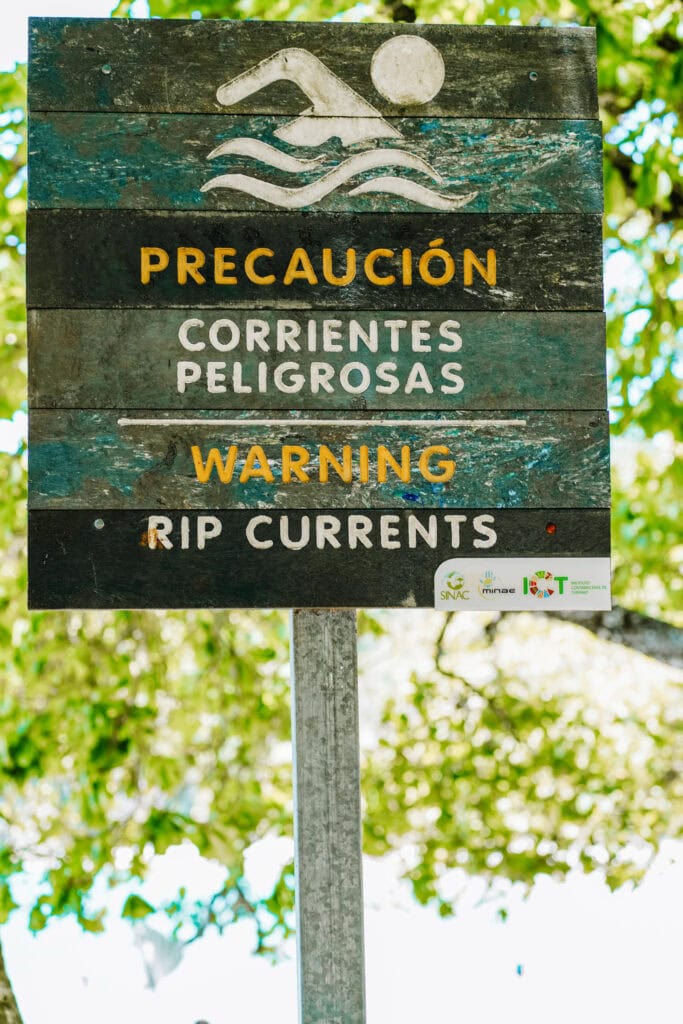
Snorkeling At Manuel Antonio
If you’re into snorkeling, Costa Rica Manuel Antonio National Park is the place to be! You can have a blast spotting all sorts of cool sea creatures like surgeonfish, rainbow wrasse, angelfish, and butterflyfish. The sweet spot for snorkeling is right inside the protected rocky area at the southern end of Playa Manuel Antonio. Sure, you can check out other spots, but trust me, this is where the fish parties are at.
Now, when it comes to visibility, keep an eye on the weather. Dry days are your best bet since heavy rain can muddy up the water with sediment, making it difficult to sometimes even see your hand in front of your face underwater.
But don’t worry about the logistics – getting to the reef is a breeze! They’ve got awesome snorkeling guides to lead you on this underwater adventure. And hey, they’ve got boats ready to roll from Marina Pez Vela in downtown Quepos. Plus, they’ll hook you up with free round-trip transportation, so you’ll be picked up right from your hotel or villa. Easy peasy!
🌱 Wellness Tip: Take a moment to practice mindfulness and deep breathing before you go in. Shut your eyes, take a deep breath through your nose, then release it gradually through your mouth. Imagine yourself floating gently across the water, totally at ease and content. Allowing yourself to de-stress, and get completely enamoured in the beauty of the undersea environment.
Your Perfect Costa Rica Manuel Antonio National Park Trip
Undoubtedly one of Costa Rica’s most popular destinations, Manuel Antonio welcomes large numbers of visitors each year, and now you too! This well-known national park offers beautiful beaches and an animal-rich tropical jungle. With so many paths to explore and beaches to relax on, there is an abundance of things to see and do. It’s understandable why Manuel Antonio National Park captured my heart—it’s without a doubt one of my favorite places in Costa Rica!
You May Also Like...
Serenity
Hey there, It's so great to have you here, As a sustainable travel blogger, I try to create original, captivating, and quality content to support and inspire you! So, if you feel called to comment any praise or ideas, I encourage you to. Your input is valuable to me! Pssstttt...Don’t forget to subscribe to the newsletter to get those goodies that are only available to those on the list. I don't want you to miss out on anything! Have a blissfully serene day, and thank you for being here, and I hope to see more of you!♡







